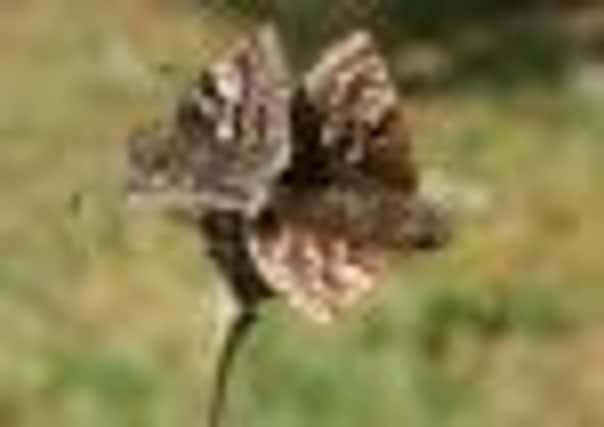Change for the better, but is it too late?


Has the better weather arrived just in time to improve the situation for those of our butterflies and moths which have been suffering from the recent cold, wet weather?
April and May are important months for some of our rarest butterfly species like the pearl-bordered fritillary, Duke of Burgundy and dingy skipper, the numbers of which usually peak around mid-May.
Advertisement
Hide AdAdvertisement
Hide AdThe weather suddenly changed for the better whilst I was attending a weekend conference of Butterfly Conservation (BC) colleagues engaged in organising projects across the North of England for just such species.
We met at Leighton Moss RSPB Nature Reserve in Morecambe Bay, since it is in that area and on the edges of the North York Moors that some of Butterfly Conservation’s biggest projects are being undertaken.
In the past we usually thought in terms of creating nature reserves to protect rare species found on them. In more recent years it has been realised that small reserved areas are usually too small to ensure a sustainable future for those rarer species.
Confined to a small area they may become genetically weakened through inbreeding and eventually disappear.
Advertisement
Hide AdAdvertisement
Hide AdAway from reserves, rarer butterflies and moths, together with many wild plants and other insects, have often suffered through overgrown countryside. In upland areas in particular, pastures have become covered in shrubs and woodlands have encroached on open areas and shaded out much of the attendant wildlife.
On the North York Moors, populations of the Duke of Burgundy and pearl-bordered fritillary plummeted during the 1990s, but since 2002 when BC responded by organising conservation work on quite a large scale, those populations have steadied, and more recently begun to improve. This is largely the result of landowners allowing BC and North York Moors National Park volunteers to organise scrub clearance on old pastures where once the presence of large amounts of wild primroses and cowslips attracted ‘the Duke’ to lay its eggs. Schools and individuals have even been raising primulas to be planted on some the sites, not any kind of primula it must be said, but specimens raised from wild seed collected from the same sites.
Now we are in the second year of a new five-year programme based on a landscape-wide project which involves management on over 30 sites. A £234,000 match funded grant from WREN, the landfill funding distributor, and the National Park, means that the work of volunteers can be supplemented by contractors to get more work done more quickly.
The planning is impressive with more and more sites being opened up and linked. Last spring we had more pearl-bordered fritillaries flying than probably seen for 50 years. ‘Dukes’ are improving more slowly, but it’s happening, whilst dingy skippers are thriving in the increased number of open spaces. Now its up to the weather…
Advertisement
Hide AdAdvertisement
Hide AdHoward Frost is Editor of Yorkshire’s annual Butterfly and Moth Report for Butterfly Yorkshire and the Yorkshire Naturalists’ Union.
Contact him via www.yorkshirebutterflies.org.uk which also carries news of the latest butterfly and moth sightings.
Liam Creedon writes:
Our spring wildlife is designed to cope with the vagaries in the weather but problems arise when unusual patterns persist – as we’ve seen this year with the long-lasting rainfall.
Rising flood water drowned nests and destroyed the breeding attempts of hundreds of birds in eastern England, says the RSPB. Dale Harrison, from the nature conservation charity Buglife, says, “There are winners and losers in the recent weather extremes.”
Cold and floods threaten bugs
Advertisement
Hide AdAdvertisement
Hide AdWeeks of unseasonal cold and rain may have some local impact on invertebrate populations, especially in areas where there has been extreme flooding, according to Buglife.
Those which nest in the ground may be flooded out such as bumblebees and mining bees and their foraging habitat may become flooded leaving them with less food sources.
Buglife has also received fewer records than normal for its survey on the rapidly declining oil beetle.